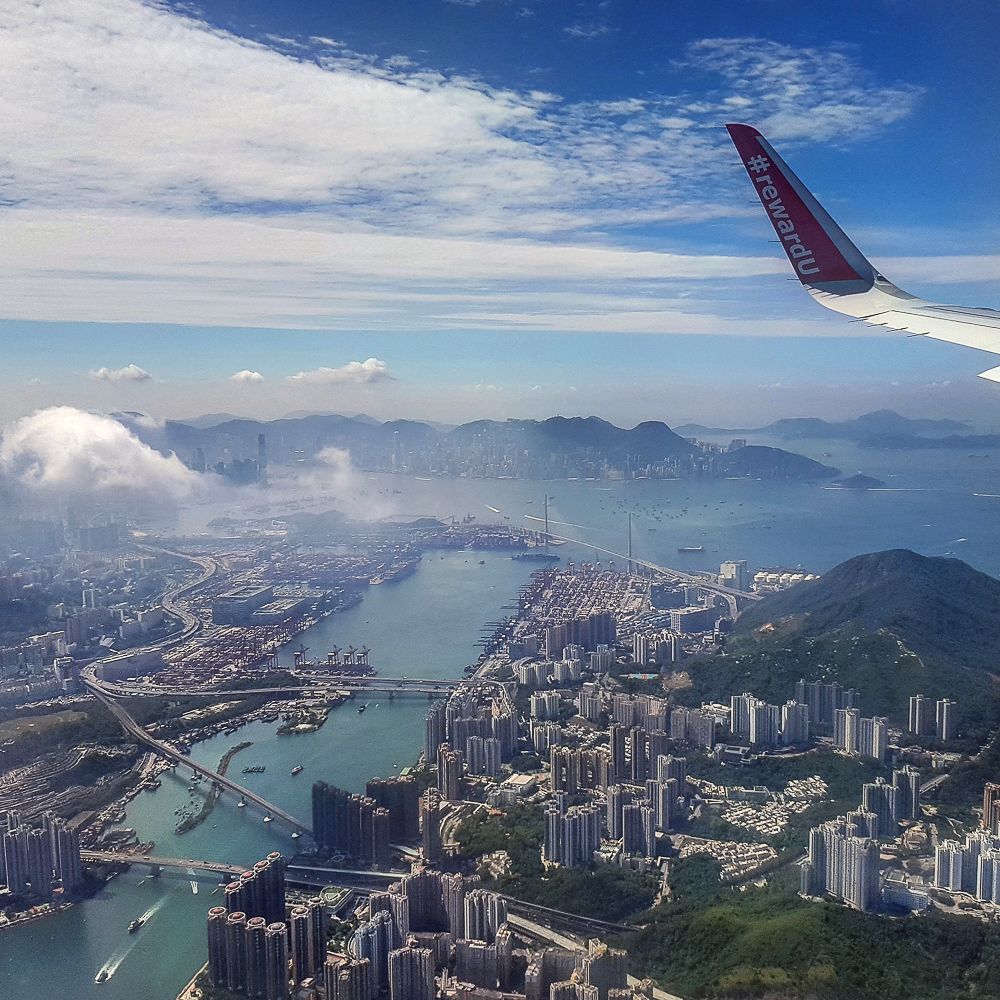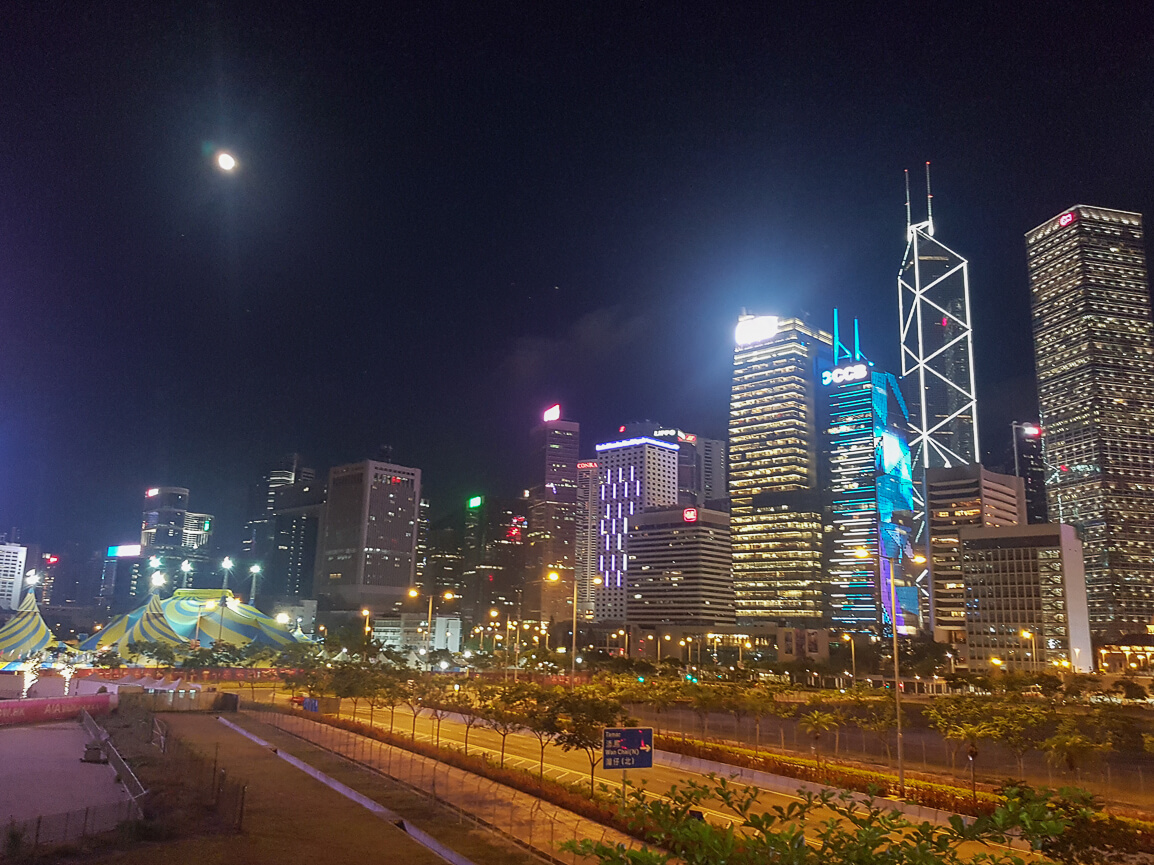Hong Kong - The Good and the Not So Good
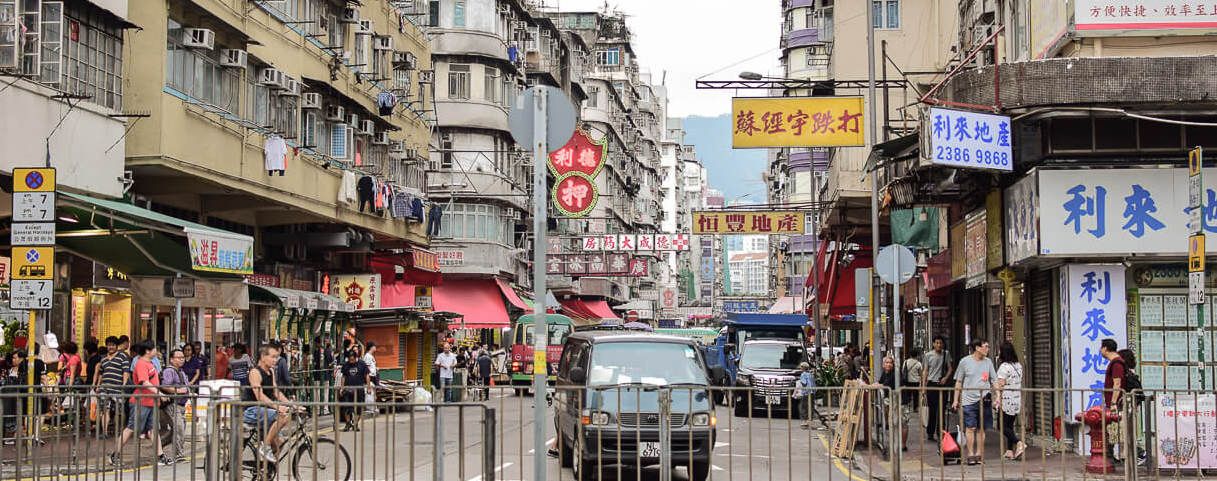
The Good part...
Between our Japan and China legs, we decided to include a 3-day stopover in Hong Kong, mainly to see Alex's highschool friend, Andy, but also to check out the city and ease our transition from the overly orderly Japan to the not-so-orderly China.
The first impression we had of Hong Kong was from above, just before we landed flying over the city, and it was amazing. Pockets of modern-looking, high rise buildings all jammed together, surrounded by the green, forest covered hills and turquoise water.
We stayed in Causeway Bay, the flashy & touristy part of the already-touristy Hong Kong island. On the 3 nights we stayed there, we treated ourselves with a night at Cirque du Soleil (which happened to be in town) and one night out with Andy.
Cirque du Soleil was an unforgettable experience. It is everything I heard before and a lot more. Absolutely mind-boggling, with contortionists, tightrope walkers, clowns and all the rest. The fact that we opted for a free-flow alcohol lounge entrance before the show also helped us enjoy it thoroughly. We left the circus feeling very merry and enjoyed the night lights of HK.
Meeting Andy was another highlight. It is hard to describe how good it is to have someone to show you their hometown, how to get around, train lines, where to eat (and even fix Alex's phone!). He also took us to some great places to experience amazing HK food and to this very cool bar, The Iron Fairies, nicely designed that had a very powerful live jazz band. Once again, we were very lucky to meet friends on the road and have a great time with them - thanks for everything, Andy!
We also had a chance to do a bit of hiking and explore the parks and beaches of Hong Kong. It was an excruciating 30ºC sunny day, but it was beautiful nonetheless. We tried out the Dragon's Back hike, through Shek O Country Park and finished at Big Wave Bay beach for a swim. Lovely views!
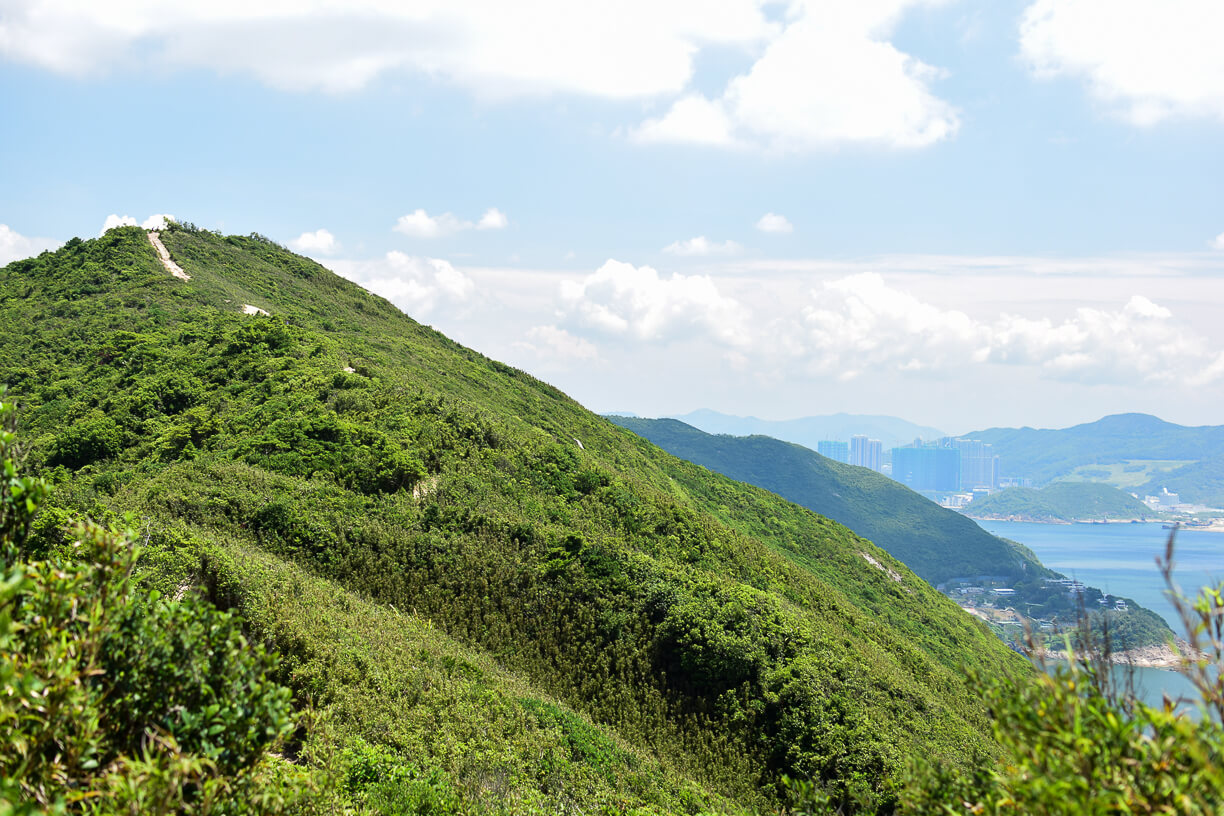
Views from the Dragon's Back hike, Hong Kong
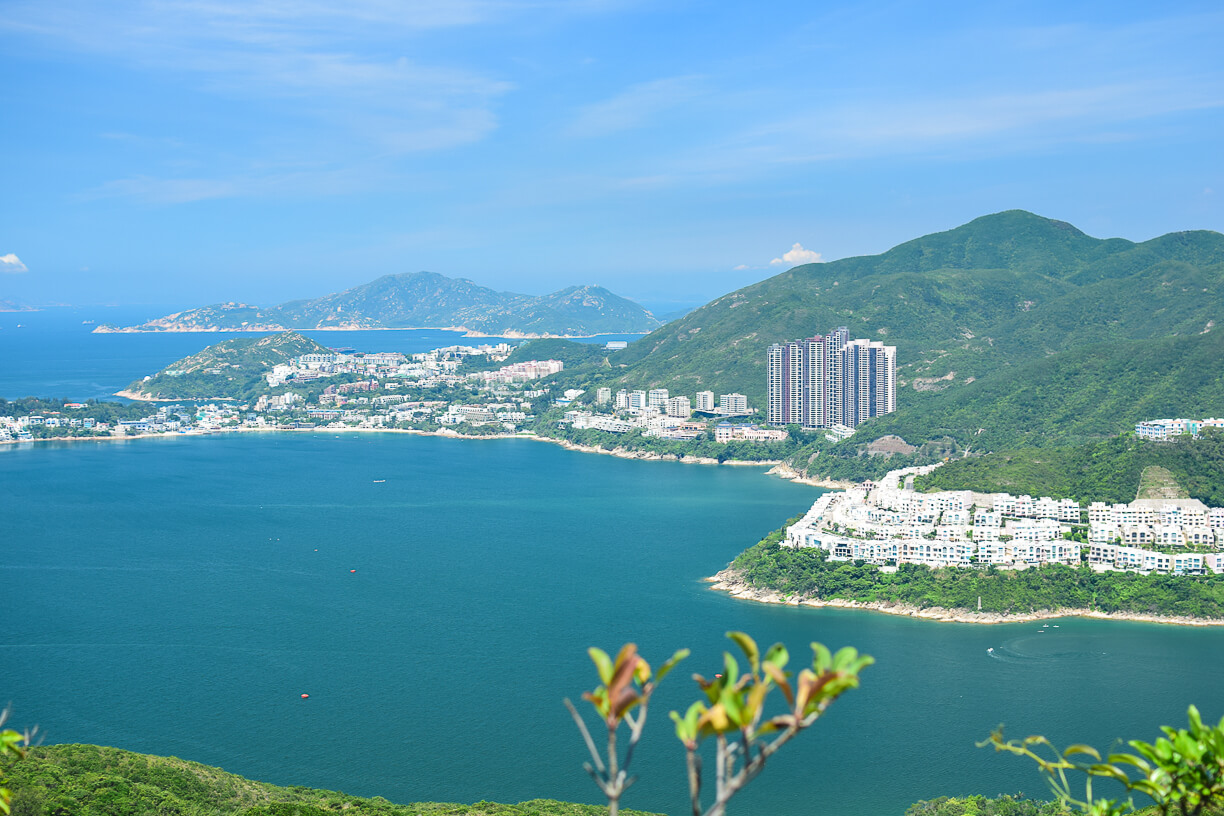
Views from the Dragon's Back hike, Hong Kong
Now, the not so good part...
I can't say it was "bad", because it was fascinating to learn all this. As most of you know, Hong Kong is the commercial hub for Southeast Asia (alongside Singapore), but the country is also plagued by one of the biggest social inequality and wealth distribution issues in the world.
Alex and I went on this free walking tour throughout Kowloon, and were bombarded with fascinating information about the local culture, and the social, economical and political situation in Hong Kong. Our guide, Johnson, was born in HK but lived and studied in Australia for a number of years before returning to work as an accountant for Microsoft only to leave it all behind to work for this free walking tour company. Clearly passionate on the issue of social welfare in HK and loaded with lots of relevant information, Johnson painted a very compelling picture of the current situation in the country regarding the living conditions. We learned that only about 7% of the country's land is currently zoned for residential use[1]. This means that the country's population of 7.4 million people have to squeeze into an area of 77 square kilometers, making Hong Kong the fourth most densely populated country in the world.
The result? Of course, the house prices just went through the roof. A second hand, 500 square feet (46 m2) 2 bedroom apartment in an average neighbourhood in Hong Kong goes for about HKD 7.5 million, which translates to about AUD 1.2 million.
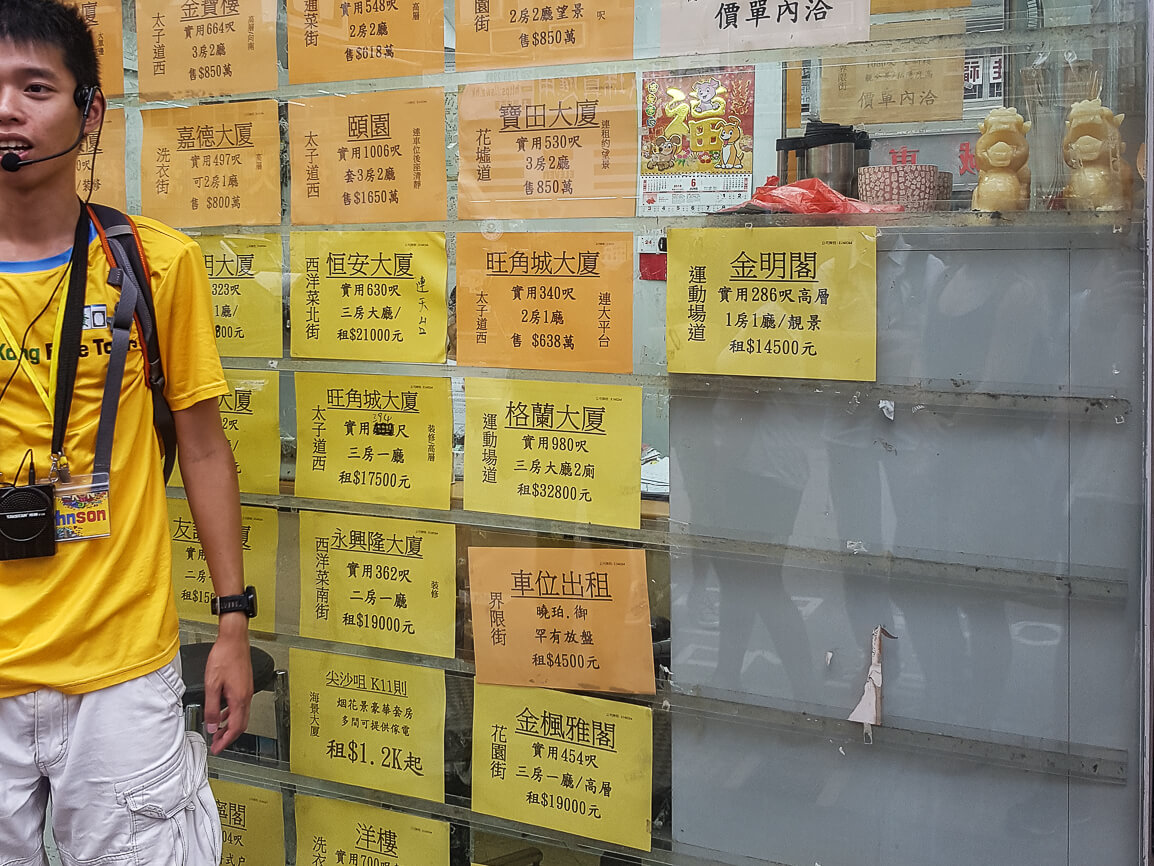
Our guide Johnson in front of a real estate agency. A 2 bed/1bath of 34 sqm goes for HK$ 6.38 M
In stark contrast to that, the minimum wage in Hong Kong is HKD 34.5 (or AUD 5.81) per hour. Now, there's this very useful concept to compare house affordability called house price-to-income ratio (or median multiple), which is defined as the ratio between the median house price and median annual household income of a given country/city. Sydney is often touted as one of the most expensive cities in the world with a very aggressive real estate market, which is true. Sydney has a house price-to-income ratio of 12.9, which means that it would take 12.9 years of a person on a median income to buy a median priced house (that is, if they don't spend any money on anything else during that time). The national Australian ratio is 5.9[3].
Hong Kong is the first on this list, with a house price-to-income ratio of 19.4
We often complain about how hard it is to enter the real estate market in Sydney, but I cannot even imagine what it would be like to do that in Hong Kong.
Another frightening figure of Hong Kong is that 20% of its population lives below the poverty line[4] - meaning they don't even make the minimum wage!
If you don't make enough money and the house prices keep rising, what do you do? Well, you reduce the size of your apartment. You start sub-dividing your apartment into 2, 3, 4 or however many subdivisions you can to make the ends meet. And this became the reality of a lot of Hong Kong residents.
People started living in sub-divided apartments (where their beds, kitchen and bathroom would all be on the same place), cage homes (where their beds and belongings are kept inside a caged area) and also what it is brutally called coffin houses - miniscule closed-off spaces where they can only fit a mattress and some of their belongings. There is this very confronting project by the photographer Benny Lam[5] that shows the living conditions of these people:
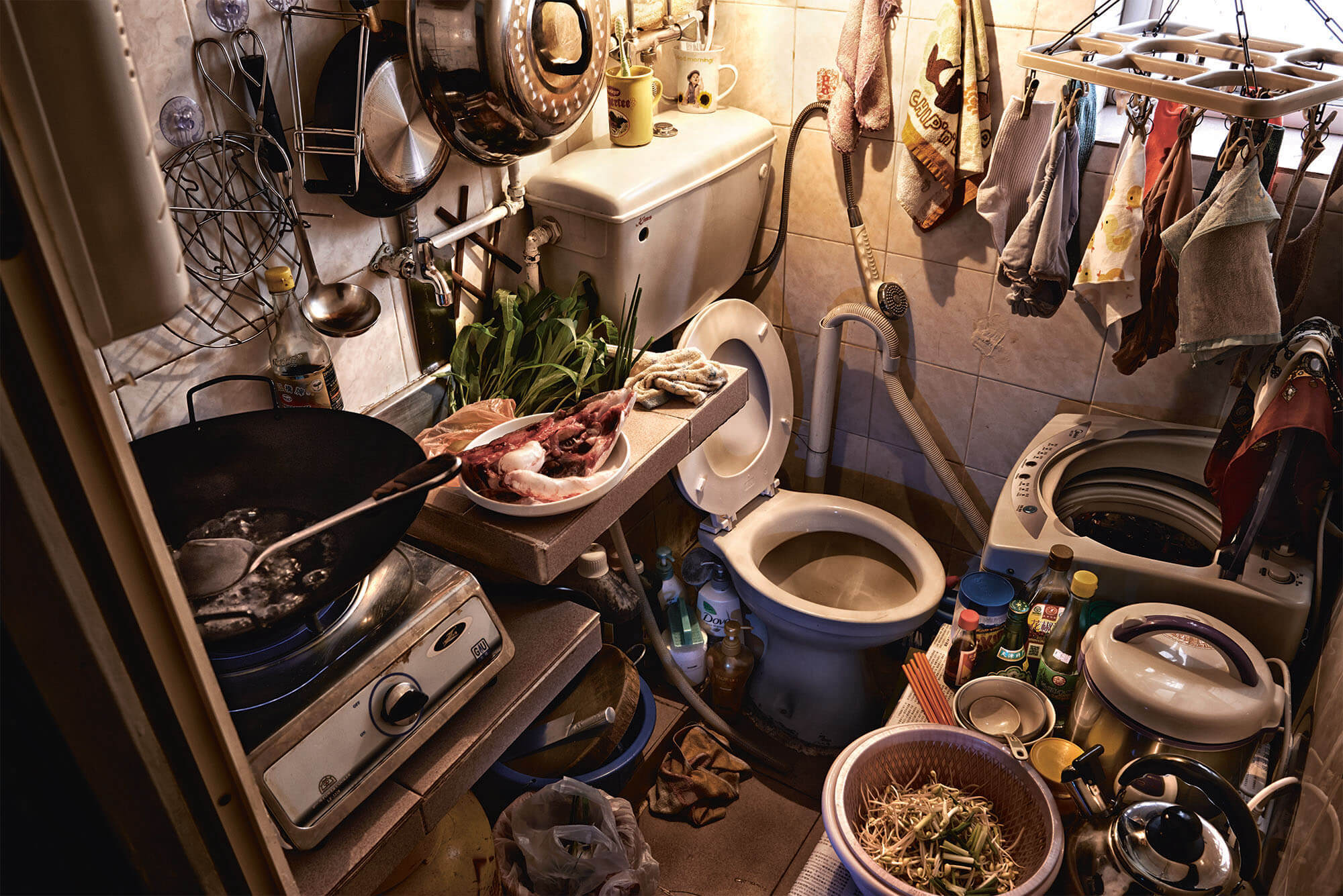
An example of a subdivided apartment. Source: Hong Kong FP
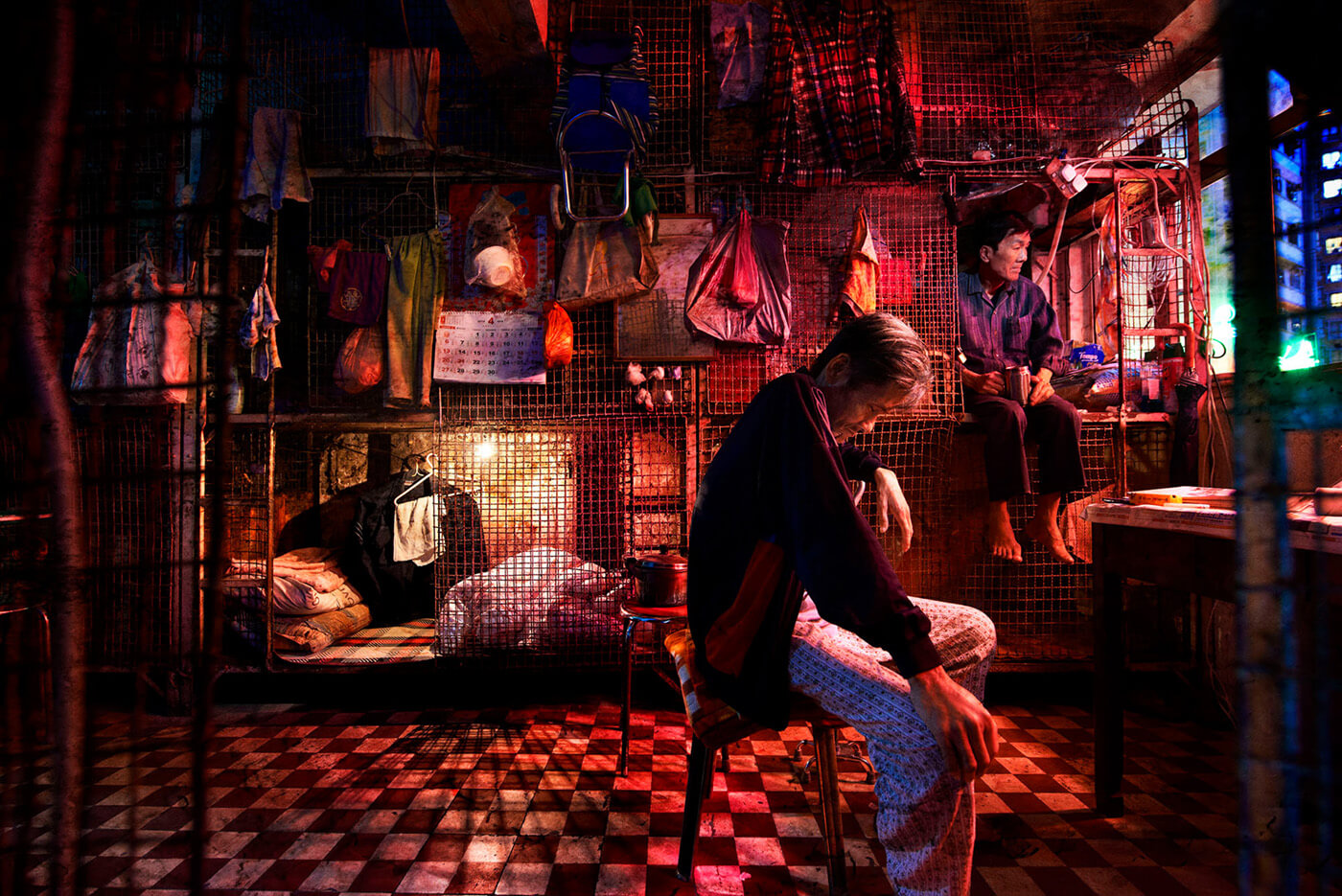
An example of a Cage Home. Source: Benny Lam
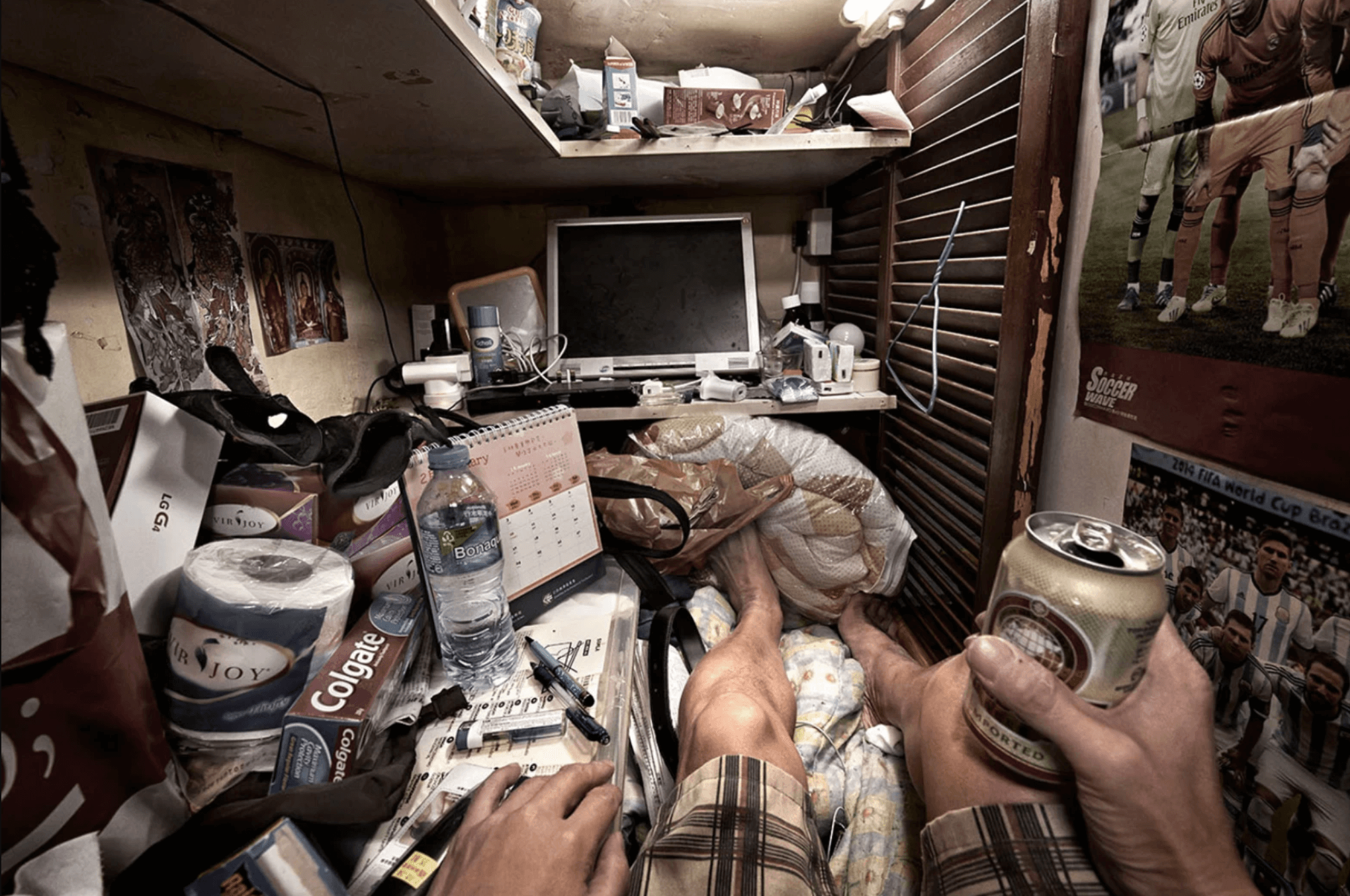
An example of a Coffin House. Source: Benny Lam
Are you still with us? If so, then you might be asking the same question as us... so what's the solution? What is the government doing about it?
Before we answer that, it's worth bringing up the Hong Kong government revenue breakdown for 2018:
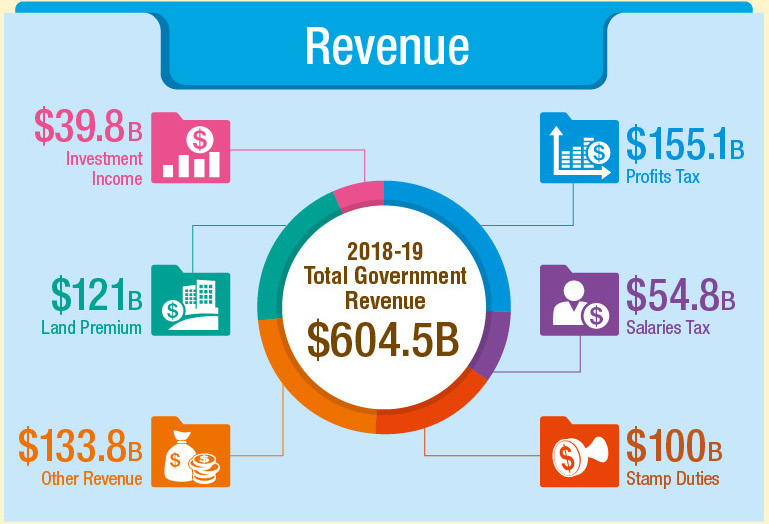
Hong Kong Government Budget - 2018
The "Stamp Duties" and "Land Premium" portions of it relate to the real estate market: how much money the government makes by providing land concessions and how much tax it gets from it. So about $221b (more than one third) of the income comes from the real estate industry. Therefore, the fact that the house prices are high in Hong Kong is actually a good thing for the government, as it means they make more money.
The first thing that came to our heads was "they should give more land for residential use! With only 7% being used, if they open up, then there would be more supply and the prices would fall!". Well, apparently it's not that simple. Hong Kong also happens to be the "most free economy" in the world, with income tax capped at just 15%. This is a huge attractive for companies and rich individuals.
If they did provide more land concessions for residential use, the government would start making less money from Land Premium, and would need to regain that money from somewhere else - possibly by increasing the income tax, and therefore getting a lot of pressure from these companies and rich guys for "destroying the most free economy" in the world! No one wants to be the guy who does that...
So... yeah, pretty hard. Our visit to Hong Kong left us scratching our heads and hoping that we could do something about it. I like to think that, as tourists, we are somehow contributing to the local economy, but we sure wanted to be able to do more...


